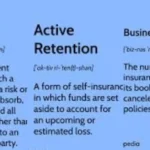The Nissan 350Z is a classic in the sports car world, loved for its sleek design, powerful engine, and dynamic handling. One modification that many 350Z enthusiasts opt for is upgrading the final drive (also known as the differential gear). Installing a new final drive can improve acceleration, optimize gear ratios for better performance, and even enhance fuel efficiency depending on your goals.
In this comprehensive guide, we’ll walk you through the step-by-step process of installing a final drive on your Nissan 350Z. This project is moderately challenging, requiring a few specialized tools and mechanical know-how, but with patience and attention to detail, it’s something many experienced DIY mechanics can accomplish.
1. Understanding the Role of the Final Drive
Before we dive into the process of installing the final drive, it’s essential to understand what it is and why upgrading it can make a significant difference.
The final drive refers to the set of gears that transfers power from the driveshaft to the rear wheels. This part affects the car’s overall gear ratios, and upgrading to a higher or lower final drive ratio can influence the car’s acceleration and top speed. For example, a lower ratio (numerically higher, such as 4.08:1) provides better acceleration at the expense of top speed, while a higher ratio (numerically lower, such as 3.54:1) gives higher top-end speed but sacrifices acceleration.
2. Tools and Equipment Needed
Before starting the installation, gather the following tools and equipment:
- Jack stands and a hydraulic jack
- Socket wrench set (including impact sockets)
- Torque wrench
- Breaker bar
- Rubber mallet
- Drip pan for fluids
- Differential oil (as specified in the 350Z service manual)
- Gear oil pump or fluid transfer pump
- Gasket sealant or new gaskets
- A replacement final drive (choose a gear ratio that fits your needs)
Optional but helpful:
- Air compressor and air tools for ease
- Shop manual for Nissan 350Z
- Anti-seize compound
3. Preparing the Vehicle
Before working on the car, ensure that the workspace is well-ventilated and safe for a mechanical project. Follow these steps:
a) Park the Car on a Flat Surface
Ensure the car is parked on a level surface to prevent any accidents. Put the transmission in gear (for manual) or park (for automatic) and apply the handbrake. Chock the front wheels to prevent any rolling.
b) Raise the Car
Using a hydraulic jack, raise the rear of the vehicle and secure it with jack stands. Ensure the car is stable before proceeding with any work. You will be working under the car, so safety is paramount.
4. Draining the Differential Fluid
Once the car is securely lifted, follow these steps to drain the differential fluid:
a) Locate the Differential
The differential is housed at the rear of the car between the rear wheels, mounted to the subframe. The differential fluid is contained inside this housing.
b) Place a Drip Pan
Position a drip pan underneath the differential housing. You’ll be draining the old differential fluid, which should be disposed of responsibly.
c) Remove the Drain Plug
Use a socket wrench to remove the drain plug from the bottom of the differential. Allow the fluid to fully drain into the pan. This step ensures that when you open the differential housing, no extra fluid leaks out, making for a cleaner job.
d) Inspect Fluid for Metal Shavings
As the fluid drains, inspect it for metal shavings, which could indicate internal wear in the differential. If excessive shavings are present, it may point to further issues with the differential.
5. Removing the Driveshaft and Axles
To gain access to the final drive, you need to disconnect the driveshaft and axle shafts from the differential.
a) Unbolt the Driveshaft
Using a socket wrench, unbolt the driveshaft from the differential. Be sure to mark the position of the driveshaft flanges before removing it to ensure proper alignment during reinstallation.
b) Remove the Axle Shafts
Next, you’ll need to disconnect the axle shafts from the differential. This may require a breaker bar for extra leverage, especially if the bolts are tightly torqued.
c) Detach Suspension Components
Depending on your specific model and setup, you may need to remove or loosen some suspension components to free the axles. Be cautious when handling the suspension, as some parts may be under tension.
6. Removing the Differential Housing
After removing the driveshaft and axles, you’ll now have access to the differential housing.
a) Unbolt the Differential Housing
Unbolt the differential housing from the subframe. This may require additional help or the use of a jack to support the differential’s weight while removing the bolts.
b) Carefully Lower the Differential
Lower the differential from the vehicle using the jack or by hand, depending on its weight. Once it’s out of the car, you can place it on a workbench for the next steps.
7. Disassembling the Differential
With the differential out, it’s time to swap out the final drive gears.
a) Open the Differential Housing
Carefully unbolt the differential housing cover, taking care to avoid damaging the gasket. You may need to tap the housing lightly with a rubber mallet to loosen it.
b) Remove the Ring Gear and Pinion Gear
The final drive consists of the ring gear and pinion gear. Use a socket wrench to remove the bolts holding the ring gear in place, then carefully remove the gear from the differential carrier. The pinion gear can be removed next, usually by unbolting the pinion shaft and pressing it out.
c) Inspect Bearings and Seals
While the differential is open, inspect the bearings and seals for any signs of wear. If they are worn or damaged, it’s a good idea to replace them at this point.
8. Installing the New Final Drive
Once the old final drive is removed, it’s time to install the new gears.
a) Install the New Pinion Gear
Start by pressing the new pinion gear into the differential housing. Ensure it is seated properly and torque the retaining bolts to the manufacturer’s specifications.
b) Install the New Ring Gear
Next, install the new ring gear onto the differential carrier. Torque the bolts to spec, using a crisscross pattern to ensure even tightening.
c) Set the Gear Backlash and Pinion Depth
Setting the correct gear backlash and pinion depth is critical for proper operation. Use a dial indicator to measure the backlash, and adjust as needed by shimming the gears. If you’re unsure about this process, consulting a shop manual or having a professional help you with the setup can save time and prevent future issues.
9. Reassembling the Differential
With the new final drive gears installed, it’s time to reassemble the differential.
a) Replace the Differential Cover
Apply a new gasket or use gasket sealant to the differential cover, and bolt it back onto the housing. Ensure all bolts are tightened evenly to avoid leaks.
b) Reinstall the Differential
Carefully lift the differential back into place under the car, using a jack if needed. Bolt it securely to the subframe.
10. Reattaching the Driveshaft and Axles
Now that the differential is back in place, reattach the driveshaft and axle shafts.
a) Bolt the Driveshaft to the Differential
Align the driveshaft with the marks you made earlier and bolt it back onto the differential.
b) Reconnect the Axle Shafts
Reconnect the axle shafts to the differential, ensuring that all bolts are properly torqued.
c) Reattach Suspension Components
If you removed any suspension components, now is the time to reattach them and torque all bolts to spec.
11. Filling the Differential with Fluid
With everything back in place, it’s time to fill the differential with fresh fluid.
a) Remove the Fill Plug
Locate the fill plug on the differential housing and remove it.
b) Fill the Differential
Using a fluid transfer pump, fill the differential with the specified amount and type of gear oil. Continue filling until the oil begins to seep out of the fill hole, indicating that the differential is full.
c) Reinstall the Fill Plug
Reinstall the fill plug and torque it to the manufacturer’s specifications.
12. Lowering the Car and Test Drive
Once the differential is filled, you’re ready to finish up.
a) Lower the Car
Carefully lower the car from the jack stands and remove any wheel chocks.
b) Test Drive
Take the car for a test drive to ensure that everything is functioning properly. Pay attention to any unusual noises or vibrations, which could indicate improper installation or gear settings. If everything feels smooth, you’ve successfully completed the installation!
Final Thoughts
Upgrading the final drive on your Nissan 350Z can significantly improve its performance, especially in terms of acceleration. While this is a more advanced DIY project, following these steps carefully and thoroughly will help ensure a successful installation. Remember, if you’re ever unsure during the process, consult a shop manual or seek assistance from a professional mechanic.











